Title: Astromaterial Science and Nuclear Pasta
Authors: M. E. Caplan, C. J. Horowitz
First Author’s Institution: Indiana University, USA
Status: arXiv.org, open access
Inside a neutron star
Neutron stars are the densest objects in the universe. Naturally, the matter inside of them is exotic and unlike anything on Earth — imagine squashing the mass of our Sun into a star only 10 km across! As one might guess from their name, neutron stars are comprised of mostly neutrons, with a small fraction of electrons and protons also contributing to their mass. A neutron star can be thought of as analogous to a giant atomic nucleus, bound by gravitational forces rather than the strong force. Under the pressure exerted by gravity, matter is compressed to the same density as the nuclei of atoms; properties of the high density matter in neutron stars are discussed in this bite.
Now, let us visualise descending through the crust of a neutron star. Figure 1 provides a schematic of the stratified layers we encounter during our descent. In the outer crust, neutrons combine into nuclei which form a solid lattice. As we descend deeper into the crust, the nuclei become increasingly giant and neutron-rich. Beyond a certain size, the neutrons begin to overflow from the nuclei and drip out, forming an ocean of free neutrons in which the lattice of nuclei is immersed. This signifies our transition into the inner crust. Here, at the base of the crust (or “mantle”), we discover the intricate nuclear structures that today’s paper is concerned with. Usually we expect nuclei to be spherical, but here the nuclei deform and fuse, forming clusters of exotic shapes called “nuclear pasta”. Beyond this point, we enter the core of the star where we find uniform nuclear matter: a neutron superfluid (a substance that flows without friction) coexists with a proton superconductor (a material that conducts electricity without resistance).
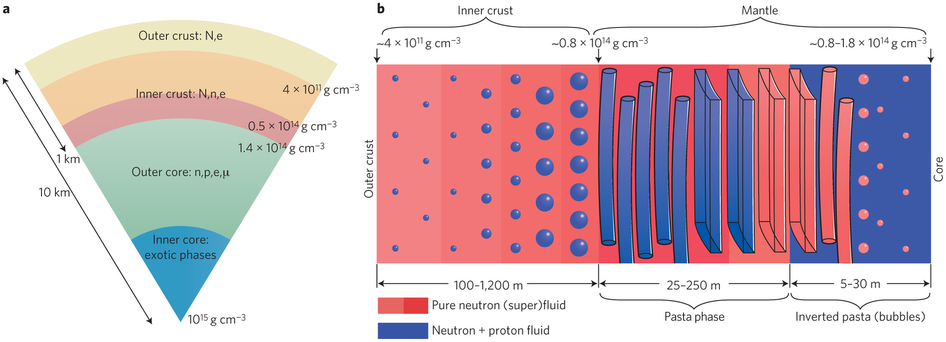
Figure 1: (a) Structure of a neutron star. Symbols N, n, p, e, μ correspond to nuclei, fluid neutrons and protons, electrons, and muons respectively. (b) Composition of the inner crust of a neutron star. Source: https://compstar.uni-frankfurt.de/outreach/short-articles/the-nuclear-pasta-phase/
Nuclear Pasta
Under the extreme, high-density conditions inside a neutron star, the competition between nuclear attraction and Coulomb repulsion yields exotic structures called nuclear pasta. Ravenhall, Pethick, and Wilson were the first to investigate these unusual configurations of nuclear matter. Nuclear pasta is characterised by complex, non-spherical patterns such as tubes, sheets and bubbles; these configurations minimize their energy (see Figure 2). The name “nuclear pasta” arose due to a resemblance to different varieties of pasta — such as lasagna, gnocchi and spaghetti!
Presently, our understanding of nuclear pasta in neutron stars is largely based on theoretical calculations. However, some observational evidence does exist that supports the existence of nuclear pasta in the crust. For example, Pons, Vigano and Rea postulate that the pasta phase limits the maximum spin period of rotating neutron stars (pulsars). They suggest that the absence of isolated X-ray pulsars with spin periods greater than 12 seconds may be observational evidence of nuclear pasta. Hunting for observational signatures of the nuclear pasta layer is a research topic of great interest.

Figure 2: Examples of different nuclear pasta phases. Figure 3 in paper.
Results
In this paper, the authors conduct semi-classical molecular dynamics simulations of nuclear pasta. The semi-classical approach is justified because the relevant behaviours involve clusters of thousands of nucleons and these heavy clusters can be treated classically. The quantum effects present at smaller scales are put in by hand through the parameters in the semi-classical model.
The authors model the geometry and topology of the complex pasta structures pictured in Figure 2 and extract useful properties of the material, such as thermal and electrical conductivity. The authors discuss how the presence of a pasta layer at the base of the neutron star crust could influence observations of astrophysical phenomena such as supernova neutrinos, magnetic field decay and crust cooling of accreting neutron stars.
Above we discussed the paper written by Pons et al. in which nuclear pasta phases are expected to contain impurities. The impurities cause the magnetic field of the neutron star to decay over 0.1-1 Myr, consistent with the observed population of isolated X-ray pulsars having spin periods less than 12 seconds. Molecular dynamics simulations in today’s paper provide evidence to support Pon’s assumption that the pasta has a high impurity parameter. Therefore, another piece of the puzzle fits together and we have even more reason to believe that nuclear pasta exists inside neutron stars.

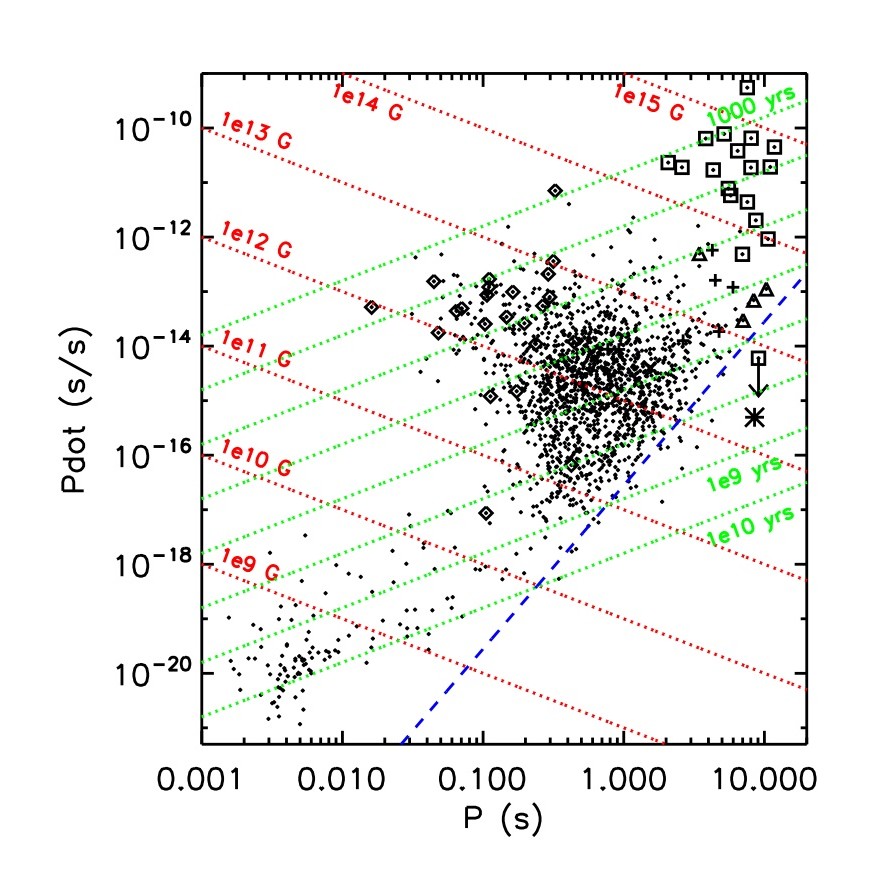
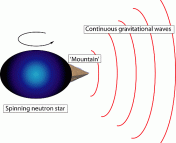
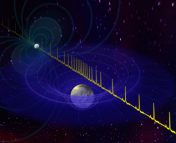
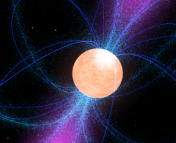
Trackbacks/Pingbacks